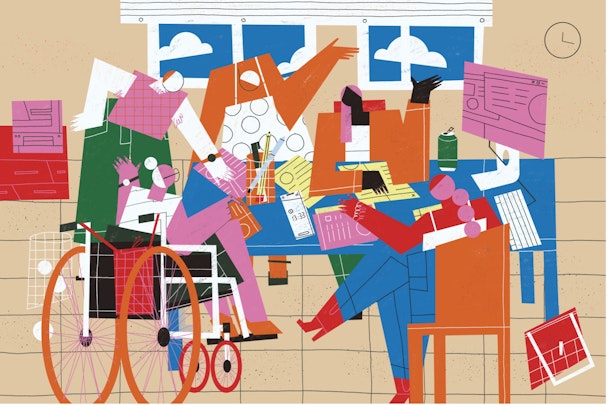Marketing and the marginalized: 5 of the top trends from 2021
As part of our Best of 2021 series, The Drum’s journalists have been looking back at some of the biggest stories of the year. Here, we revisit our Marketing and the Marginalized Deep Dive.

Highlights from The Drum's Marketing & the Marginalized Deep Dive
Increased awareness around mental health and wellbeing has placed DE&I at the forefront of conversations around the future of work, and the ad industry is no exception.
Whether it’s tackling ageism, racism, ableism or inclusivity for marginalized communities, adland is starting to reckon with its responsibility to represent those historically underserved – both in its ads and behind the scenes.
Our Marketing and the Marginalized Deep Dive looked at how the marketing and advertising industries can better serve the needs of underrepresented communities. Here we look at some of the highlights, and consider what we might expect from 2022.
1. Tackling ageism (especially against women)
A recent WFA DE&I census found that ageism was the most reported form of discrimination within the marketing and advertising industries. Furthermore, factors such as family status and care responsibilities mean that older women are particularly impacted. You can read more about some of these issues here.
When it comes to representation in ads, ageism is an issue the industry is aware of. It’s an issue the industry has tried to change. But the misrepresentation – and worse, the complete ignoring – of older generations, and again, especially women, is a problem that persists. You can read more about the issue of representing older women here.
This year, the theme of Channel 4’s annual Diversity in Advertising award was this very topic, and first prize handed to Tena for its spot that seeks to educate viewers on menopause. With the spot set to be released in early 2022, it’s a theme we can expect to see highlighted in the coming year.
2. Addressing racial inequality
This year, the Ad Association’s (AA) All In census revealed that a third (32%) of Black talent in UK advertising say they’ll leave the industry altogether over lack of inclusion, while 27% of British Asian talent said the same. You can read more about how British Asians representation can improve here.
Meanwhile, in the US, Hispanic and Latino Americans are the second-largest ethnic group, making up nearly 20% of the total population. However, only about 6% of marketing spend is invested in this community. American Indian and Alaska Natives (AI/AN) account for 9.8 million people, yet have been largely ignored by brands. You can read more about the issue here.
3. Focussing on intersectionality
In its census, the WFA also noted that those living at the intersections of multiple underrepresented communities, such as women or ethnic minorities also identifying as LGBTQ+ or having a disability, are more likely to have a poorer quality of life and experience of working in the industry.
Model and founder of the trans inclusion group Not A Phase Dani St James makes the case that a future of positive representation requires the marginalized to be consistently in mainstream media, not just in content about diversity.
4. Supporting neurodiversity
Creative Equals, the global not-for-profit consultancy, found in its 2020 Equality Standard Accreditation survey that 18% of employees in advertising, marketing and media have one or more neurodiverse traits, including but not limited to ADHD, autism and dyslexia.
But while discussions around diversity and inclusion in the workplace have picked up steam in recent years, how often do these conversations consider neurodivergent people? And, considering how important individuals who think differently are to creative organizations, what policies are in place to facilitate their needs? You can read the full story here.
5. Prioritizing accessibility
When it comes to prioritizing accessibility more widely, disabilities campaigners say marketers need to include insights from people with a disability in the initial planning of a campaign if the industry is serious about improving representation. You can read the full story here.
There are many ways brands can be more accessible without having to completely overhaul their communications strategy, writes Conscious Being editor Chloe Johnson. Read her tips on how to improve comms accessibility here.

